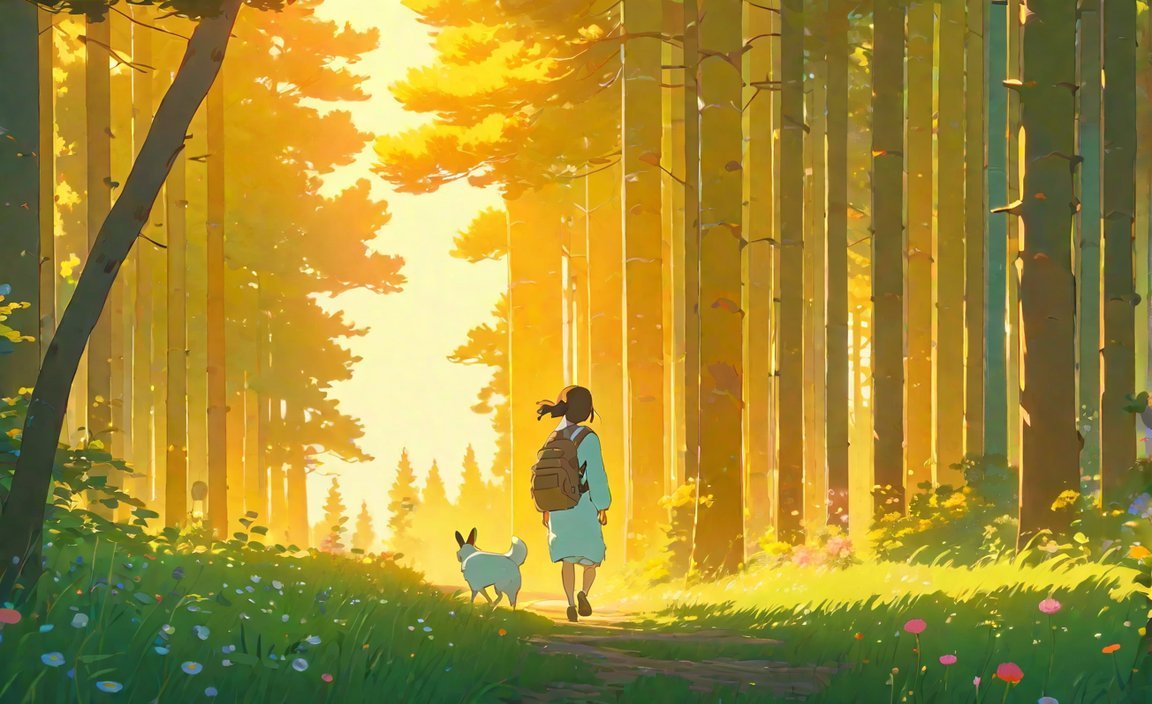Discover a fascinating fun fact about Sweden where the worlds of design, art, coffee, and royalty collide. Uncover the captivating charm of Swedish design, explore the underground wonders of Stockholm’s metro stations adorned with stunning art, indulge in the rich coffee and food culture, and delve into the intriguing world of Swedish royalty. Join us on a journey through the enchanting facets of Sweden that will leave you awe-inspired and yearning for more.

Key Takeaways:
- The world’s first ice hotel was built in Sweden in 1989 from ice blocks cut from the Torne River.
- Sweden was the first country to ban the smacking of children in 1979.
- Sweden has approximately 20,000 Sámi people living in the country today, and Sámi has been an official language since 2000.
- Two-thirds of Sweden’s land area is covered by forest.
- North Korea owes Sweden 2.7 billion SEK in debt.
- Sweden is the fifth largest country in Europe in terms of area.
- There are approximately 300,000 to 400,000 moose roaming freely in the Swedish woods.
- The Swedish Passport ranks among the world’s best passports.
- Swedish music is one of Sweden’s biggest exports.
- Sweden is home to the world’s first IKEA store.
Sources:
– Nomads Unveiled
– Swedish Nomad
Fun Fact About Sweden
Sweden, a country known for its picturesque landscapes and rich cultural heritage, is also home to some fascinating fun facts that will pique your curiosity. Let’s dive into one of the most intriguing fun facts about Sweden.
Sweden: The Land of the Sami People
One of the lesser-known facts about Sweden is its close connection to the indigenous Sámi people. Sweden is home to approximately 20,000 Sámi individuals, who have been an integral part of the country’s rich cultural tapestry for centuries. In recognition of their cultural significance, the Sámi language was declared an official language of Sweden in the year 2000 [^2^].
Discovering the Sami Culture
The Sámi people have a deep-rooted connection to the land and have managed to preserve their unique cultural traditions and way of life despite facing countless challenges over the years. Exploring the Sami culture in Sweden is an incredible journey that will allow you to immerse yourself in their enchanting traditions and gain a deeper understanding of their history and customs.
The Joy of Reindeer Herding
Reindeer herding has been a significant part of the Sámi culture for centuries, symbolizing their deep bond with nature. Many Sámi individuals are still actively engaged in reindeer herding, continuing the traditions passed down from their ancestors. Witnessing a traditional reindeer herding event or even participating in one can be a truly unforgettable experience [^2^].
A Glimpse into Sámi Art and Crafts
Another fascinating aspect of Sámi culture lies in their exquisite art and crafts. Sámi handicrafts showcase the tremendous skill, creativity, and attention to detail of the Sami people. From intricately woven traditional clothing to beautiful silver jewelry adorned with intricate designs, Sámi art offers a glimpse into an ancient and vibrant culture [^2^].
Experiencing the Sámi Way of Life
To fully immerse yourself in the Sámi way of life, consider visiting one of the Sámi villages in Sweden. These villages offer a unique opportunity to interact with the local community, learn about their traditions, taste traditional Sámi cuisine, and even witness traditional Sámi performances and celebrations. It’s an experience that will leave you with a deep appreciation for the Sámi culture and their resilience throughout history [^2^].
Understanding the Cultural Significance
Exploring the rich cultural heritage of the Sámi people in Sweden not only allows you to discover a fascinating fun fact about Sweden, but it also provides a window into the world of indigenous cultures and their contribution to society. By valuing and preserving such cultural diversity, Sweden sets an example for the rest of the world, emphasizing the importance of honoring and celebrating indigenous cultures and their unique traditions [^2^].
Conclusion
Sweden’s connection to the Sámi people and their vibrant culture is a captivating fun fact that often goes unnoticed. By delving into the world of the Sámi, we not only uncover a fascinating part of Sweden’s history but also gain a deeper appreciation for the diverse cultures that enrich our world. So, next time you explore Sweden, remember to take a moment to immerse yourself in the Sámi culture and experience the magic that lies within this hidden gem of Swedish heritage [^2^].
Check out some interesting fun facts about Nepal here.
Curious about the fun facts of Sri Lanka? Discover them here.
Uncover fascinating insights about Armenia with these fun facts here.
Ready to learn something interesting about Honduras? Click here to find out!
Explore the intriguing fun facts about Albania by clicking here.
5. Swedish Coffee and Food Culture
Swedish coffee and food culture are truly fascinating and unique aspects of this Nordic country. From the indulgent cinnamon buns to the social ritual of fika, Sweden has a lot to offer for coffee and food enthusiasts. Let’s delve into the captivating world of Swedish coffee and food culture.
The Art of Fika
Fika, the Swedish coffee break, is an integral part of daily life in Sweden. It’s not just about grabbing a quick cup of coffee; it’s a cherished social tradition. Swedes embrace fika as a time to take a break, relax, and connect with friends, family, or colleagues. Imagine sitting in a cozy café, savoring a delicious pastry while engaging in interesting conversations. That’s the essence of fika.
Swedish Café Culture
Sweden’s café culture is refined and traditional. In many establishments, fika is taken seriously, with beautifully presented pastries and a vast selection of coffee. Cafés in Sweden are serene retreats where people can escape the hustle and bustle of everyday life and indulge in the simple pleasure of a good cup of coffee. Each sip of coffee is savored, and each bite of cake is relished.
One notable coffee chain that has embraced the fika tradition is Waynes. As Sweden’s first coffee chain, Waynes blends the Italian coffee culture with American pastries to create a unique fika experience. Its cozy and inviting ambiance makes it an ideal spot for fika enthusiasts to gather and enjoy their coffee and treats.
Swedish Fika Classics
When it comes to fika, Sweden offers an array of tempting treats. The classics include:
- Cinnamon Buns: Sweden is credited with inventing the cinnamon bun, known as “kanelbullar” in Swedish. These fluffy, aromatic rolls are the epitome of Swedish fika.
- Princess Cake: A delightful green dome of sponge cake, whipped cream, vanilla custard, and a thin layer of marzipan. The princess cake is a Swedish icon.
- Strawberry Cake: A luscious combination of layers of sponge cake, fresh strawberries, and whipped cream. Swedish summer is incomplete without this fruity indulgence.
- Sticky Chocolate Cake: A rich, gooey chocolate cake that is sure to satisfy any chocolate lover’s cravings.
- Seven types of cookies: Swedes take their cookie selection seriously. The “Sju sorters kakor” tradition involves presenting a platter with at least seven different types of cookies during fika.
These mouthwatering treats are just a glimpse of the diverse and delectable fika culture in Sweden.
The Coffee Capital
Did you know that the Nordic countries, including Sweden, are the biggest coffee drinkers in the world? Coffee has become an integral part of Swedish culture, and it’s no surprise that the country takes its coffee seriously. Swedes enjoy high-quality coffee, and their love for the black brew extends beyond fika. Whether it’s a morning cup to kick-start the day or an afternoon pick-me-up, coffee is a constant companion in Sweden.
Key Takeaways:
- Fika is a cherished Swedish tradition and an opportunity to enjoy a social coffee break with pastries.
- Swedish café culture blends refinement with traditional elements, offering an escape for coffee and cake lovers.
- Waynes, Sweden’s first coffee chain, embraces the fika tradition and infuses it with Italian coffee and American pastries.
- Classic Swedish fika treats include cinnamon buns, princess cake, strawberry cake, sticky chocolate cake, and seven types of cookies.
- Sweden holds the title for being the world’s largest consumer of coffee, with Nordic countries having a deep-rooted coffee culture.
Sources:
– Fika: The Art of the Swedish Coffee Break
– The 10 Coffee Capitals of the World
8. Swedish Royalty
Did you know that the Swedish monarchy was the first to change its succession rules, allowing the eldest child, regardless of gender, to inherit the throne? This progressive shift in tradition showcases Sweden’s commitment to gender equality and inclusivity within the royal family [^2^].
The Swedish royal family is renowned for their contributions to society and their dedication to important causes. Queen Silvia of Sweden, for instance, holds the distinction of being the first queen to have had a career before marrying into the royal family [^2^]. This exemplifies the modernity and openness of the Swedish monarchy.
Furthermore, members of the Swedish royal family, including King Carl XVI, Crown Princess Victoria, and Prince Carl Philip, have been open about their struggles with dyslexia [^2^]. Their willingness to share their personal challenges helps raise awareness and break down stigmas surrounding learning disabilities.
Sweden’s royal family also places great importance on environmental sustainability. They are known for being environmentally conscious and have actively promoted sustainable practices within their own lives and in the country as a whole [^2^]. Their commitment to the planet and the promotion of sustainable living serves as an inspiration to people around the world.
The Swedish royal family’s progressive values and dedication to important causes make them a source of admiration and inspiration. Their unique contributions and challenges contribute to the rich tapestry of Swedish culture and history.
Key Takeaways:
- The Swedish monarchy was the first to change its succession rules, allowing the eldest child, regardless of gender, to inherit the throne [^2^].
- Queen Silvia of Sweden is the first queen to have had a career before marrying into the royal family [^2^].
- Members of the Swedish royal family, including King Carl XVI, Crown Princess Victoria, and Prince Carl Philip, have been open about their struggles with dyslexia [^2^].
- The Swedish royal family is known for their commitment to environmental sustainability and promoting sustainable practices [^2^].

FAQ
Q1: What is Swedish design known for?
A1: Swedish design is known for its simplicity, functionality, and minimalism. It often focuses on clean lines, natural materials, and practicality.
Q2: What kind of art can be found in the Stockholm metro stations?
A2: The Stockholm metro stations feature unique and diverse artwork. Passengers can find stunning murals, sculptures, installations, and other forms of art created by various artists.
Q3: What is Swedish coffee and food culture like?
A3: Swedish coffee and food culture is deeply ingrained in daily life. The tradition of “fika” encourages socializing over a good cup of coffee and indulging in delicious pastries like cinnamon buns. Swedish cuisine also includes reindeer dishes, wild berry soups, and outdoor seafood parties.
Q4: What unique contributions has the Swedish royal family made?
A4: The Swedish royal family has made several unique contributions. They were the first monarchy to change succession rules, allowing the eldest child, regardless of gender, to inherit the throne. Queen Silvia is the first queen to have had a career before marrying into the royal family. The royal family is also known for their environmental consciousness and passion for sustainability. They have been open about their struggles with dyslexia, raising awareness and understanding of the condition.
Q5: What are some interesting facts about Swedish royalty?
A5: Some interesting facts about Swedish royalty include that members of the royal family, such as King Carl XVI, Crown Princess Victoria, and Prince Carl Philip, have been open about their struggles with dyslexia. Additionally, the Swedish royal family is known for their dedication to environmental sustainability and their contribution to changing succession rules in the monarchy.
- Senior at What Age: Benefits & Eligibility Guide - March 29, 2025
- Unlocking Senior Benefits: How Old is a Senior? Your Complete Guide - March 29, 2025
- Master Russian Politeness:A Guide to Saying Please - March 29, 2025
















